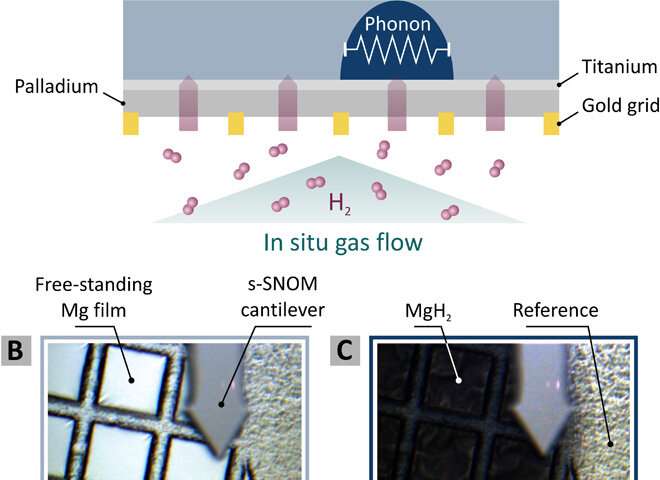Switchable materials that have extreme material
contrast and short switching times with negligible degradation can
contribute to active plasmonic and nanophotonic systems. In order
to understand their supreme properties, researchers must gather
in-depth knowledge about nanoscopic processes. In a new study now
published on Science Advances, Julian Karst and a team of
scientists at the University of Stuttgart, Germany, investigated
nanoscopic details of the phase transition dynamics of metallic
magnesium (Mg) to dielectric magnesium hydride (MgH2) using
free-standing films to conduct nanoimaging in the lab. The team
used characteristic MgH2 phonon resonance to obtain unprecedented
chemical specificity between the material states. The results
revealed the nucleation process that occurred during
nanocrystalline formation. They measured a faster hydride phase
propagation at the nanoscale, compared to macroscopic propagation
dynamics. The innovative method offers an engineering strategy to
overcome limited diffusion coefficients with substantial impact in
order to design, develop and analyze switchable phase transition,
hydrogen storage and generation materials.
Watching the in situ hydrogen diffusion dynamics in
magnesium on the nanoscale



